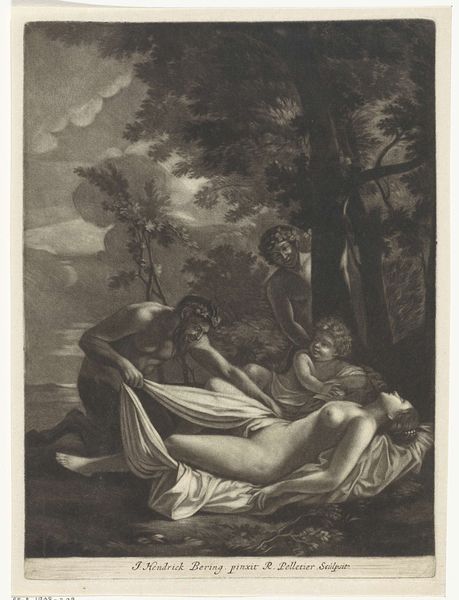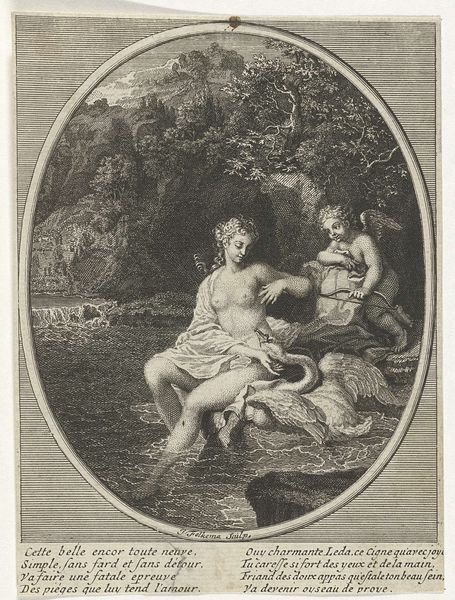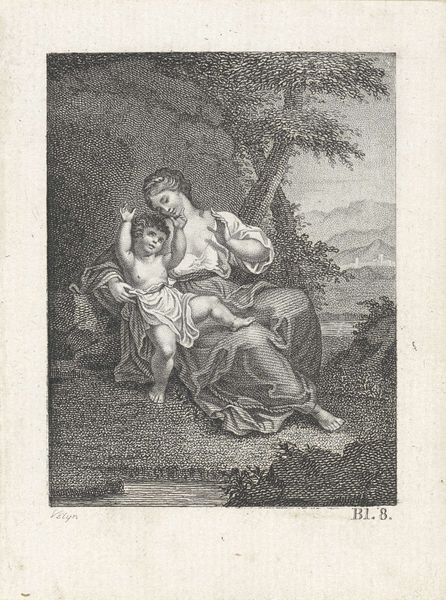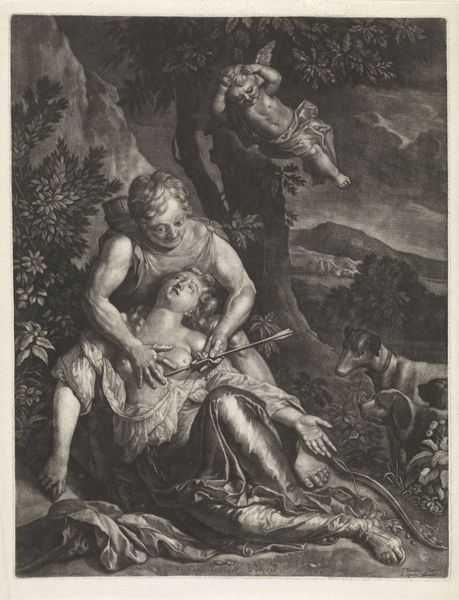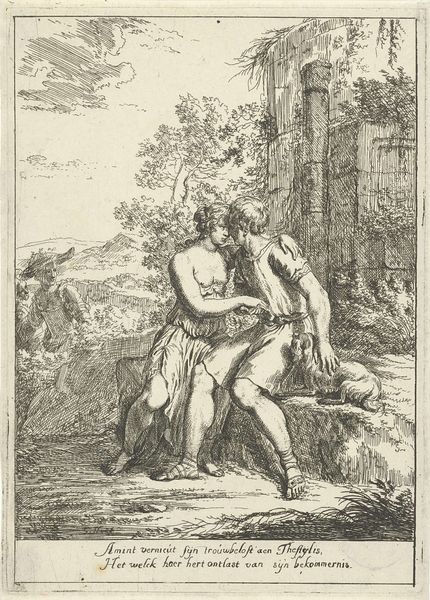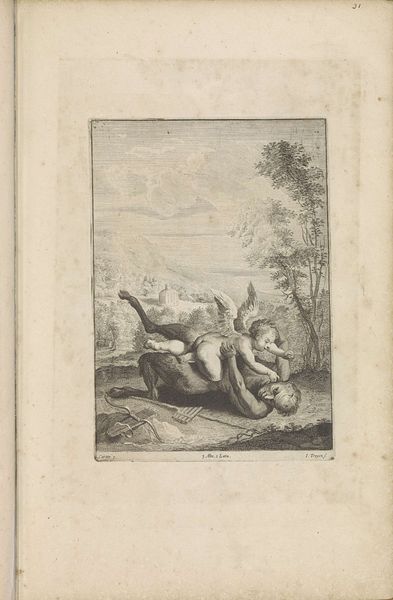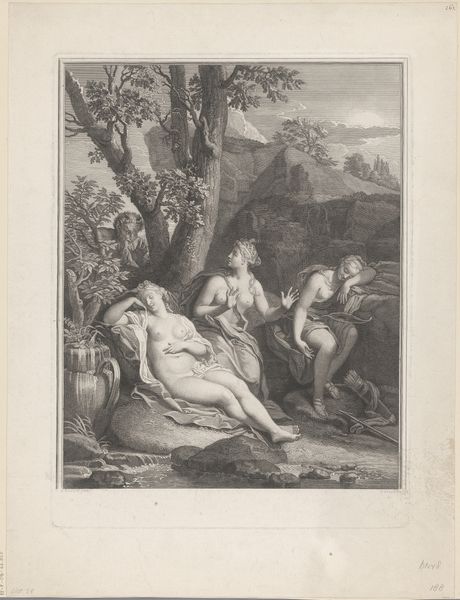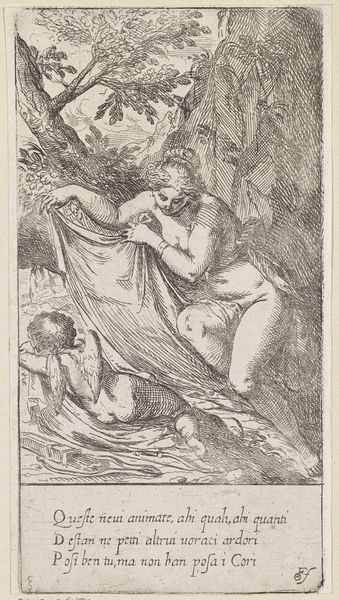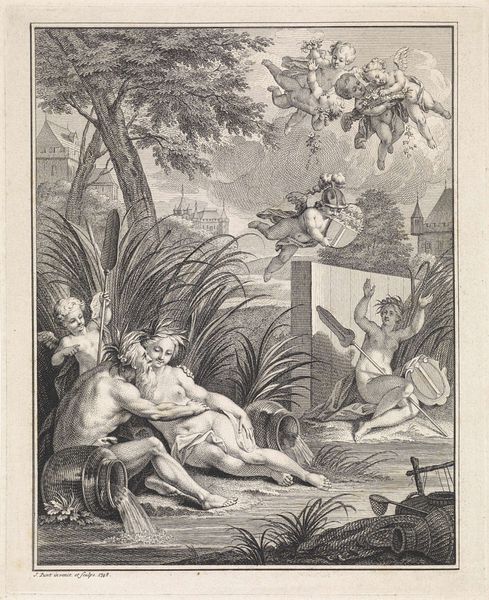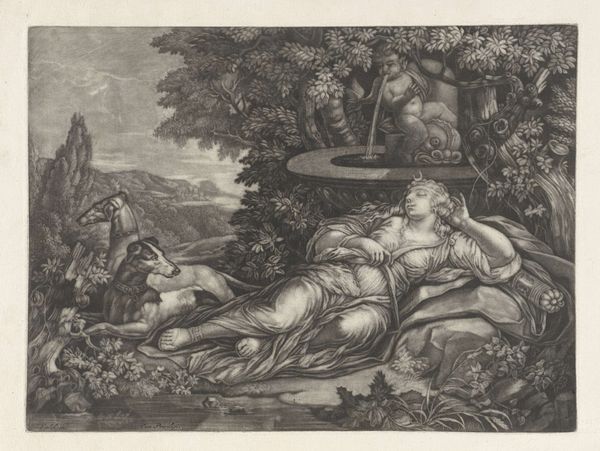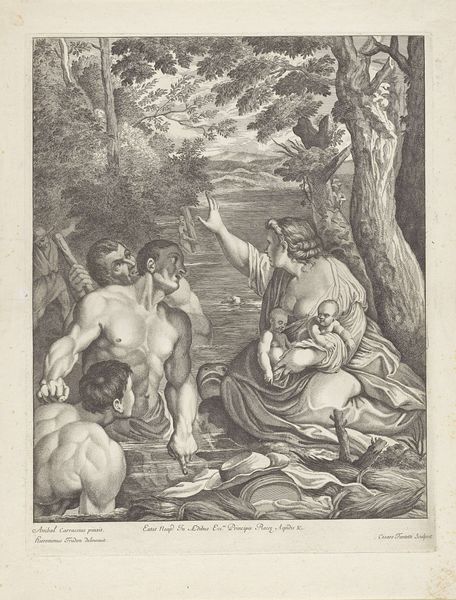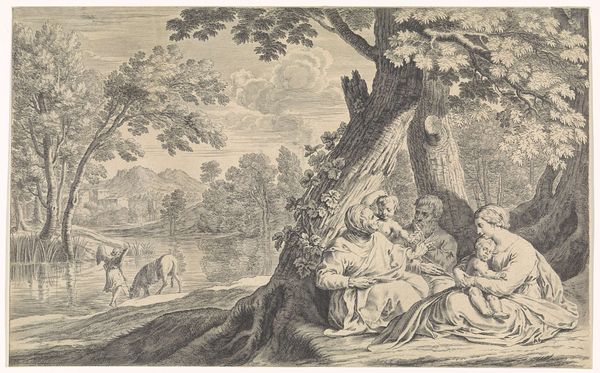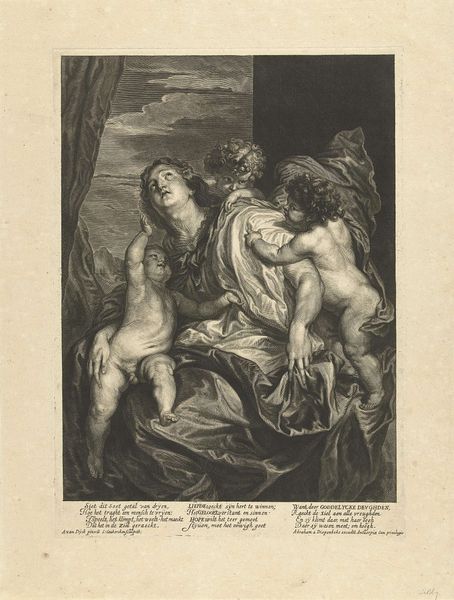
engraving
#
baroque
#
figuration
#
line
#
history-painting
#
nude
#
engraving
#
erotic-art
Dimensions: height 245 mm, width 164 mm
Copyright: Rijks Museum: Open Domain
Curator: Bernard Picart's 1693 engraving, "Hermaphroditus en Pan", offers us a window into baroque sensibilities, currently housed at the Rijksmuseum. Editor: Immediately striking is the composition; the light contrasts starkly against the dark foliage, highlighting the languid form of the nude figure beside a pond. There’s a somewhat unsettling voyeuristic mood conjured. Curator: Indeed. The medium itself—engraving—is vital. The lines, etched with painstaking care, allow Picart to create an extraordinary sense of depth and texture, despite the restriction of the monochromatic palette. How the artisan painstakingly transfers the drawing to the plate affects every line! The availability of paper, the etchant, the labor... Editor: I see those precise lines creating a narrative woven with symbolic threads. The sleeping figure of Hermaphroditus, the lustful Pan looming, a Cupid floating overhead… they draw upon a well of classical myth, reimagined with a distinctly baroque flair, right? Hermaphroditus is meant to symbolize the unification of masculine and feminine, but Pan represents primal, earthly desires. Curator: Precisely. The placement near water—reflecting an ethereal or idealized version—makes me wonder about its availability as a resource. Was it free or charged, private or for communal purposes, reflecting some hierarchy. I wonder about what materials the artist would have used to seal off the area and engrave... Editor: Don't you see the visual language here, carefully planned? Look at the way Cupid seems to be mediating between them! In this arrangement, one figure's desire could overcome the harmony it brings together. The erotic undercurrent is unmistakable; even the landscape itself contributes to this feeling with lush growth almost pressing down on them all, adding an overwhelming visual symbolism to Picart's world view. Curator: The engraving suggests the availability and relatively affordability of art in that time period. One copy begot hundreds or thousands more copies in industrialised ways! The lines remind us how reproducible these types of images would have been in 1693. Editor: Yes, understanding the social implications matters; however, seeing the recurring figures gives insight into our understanding about sensuality, divinity, and transgression! So much can be told here through symbolism and myth. Curator: Understanding the processes allows me a deeper understanding about accessibility within broader contexts of early modernity, especially among the merchant class. Editor: A stimulating encounter, underscoring how form and content contribute to Picart's vision—one driven by both technique and a carefully considered symbolic lexicon!
Comments
No comments
Be the first to comment and join the conversation on the ultimate creative platform.
